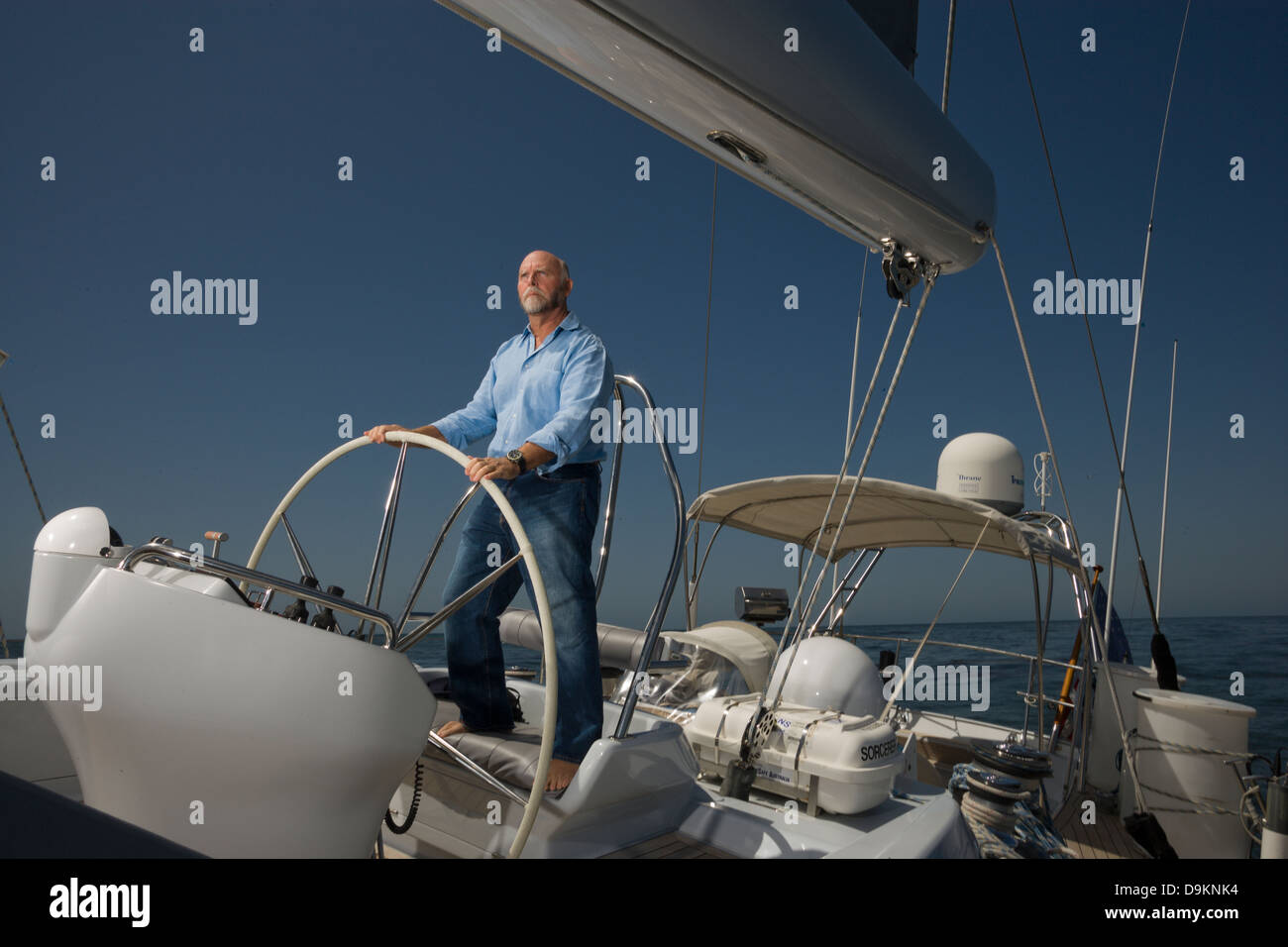SAN DIEGO, CA – APRIL 19: Dr. Craig Venter on his Sail Boat in San Diego, California, U.S. on April 19, 2007.

Image details
Contributor:
evan Hurd / Alamy Stock PhotoImage ID:
D9KNK4File size:
31.3 MB (852.9 KB Compressed download)Releases:
Model - no | Property - noDo I need a release?Dimensions:
4050 x 2700 px | 34.3 x 22.9 cm | 13.5 x 9 inches | 300dpiDate taken:
20 April 2007Location:
San Diego, California, U.S.More information:
Dr. J. Craig Venter on his research sail boat, the Sorcerer II off the coast of San Diego California. Researchers from the J. Craig Venter Institute (JCVI) are in the midst of phase 2 of the Oceanic Sampling in PLoS Biology detailing the discovery of millions of new genes, thousands of new protein families and specifically the characterization of thousands of new protein kinases from ocean microbes using whole environment shotgun sequencing and new computational tools. Researchers believe these data will lead to better understanding of key biological processes which could eventually offer new ideas for alternative energy production and could offer solutions to deal with climate change and other environmental issues. JCVI is also completing a new sequencing of one complete human genome set to be published in early summer 2007. For more than two decades Dr. J. Craig Venter and his research teams have been pioneers in genomic research. In 1991 when at the National Institutes of Health Dr. Venter and his team developed expressed sequence tags (ESTs), a new technique to rapidly discover genes. Dr. Venter and his colleagues then started a new kind of not for profit research institute, The Institute for Genomic Research (TIGR). With the freedom to pursue any number of exciting avenues in the burgeoning field of genomics, the team decided to use their new computing and computational tools, as well as new DNA sequencing technology to sequence the free living organism, Haemophilus influenzae in 1995. With this advance, the floodgates of genomics were opened. TIGR went on to sequence and analyze more than 50 microbial genomes. Dr. Venter and some from his team moved into mammalian genomics and sequenced some of the most important model organisms including the fruit fly, mouse and rat. The world’s attention was perhaps most keenly focused on the sequencing and analysis of one genome—the human—which was published in 2001 by Dr. Venter and his team at Celera Genomics. DNA from 5